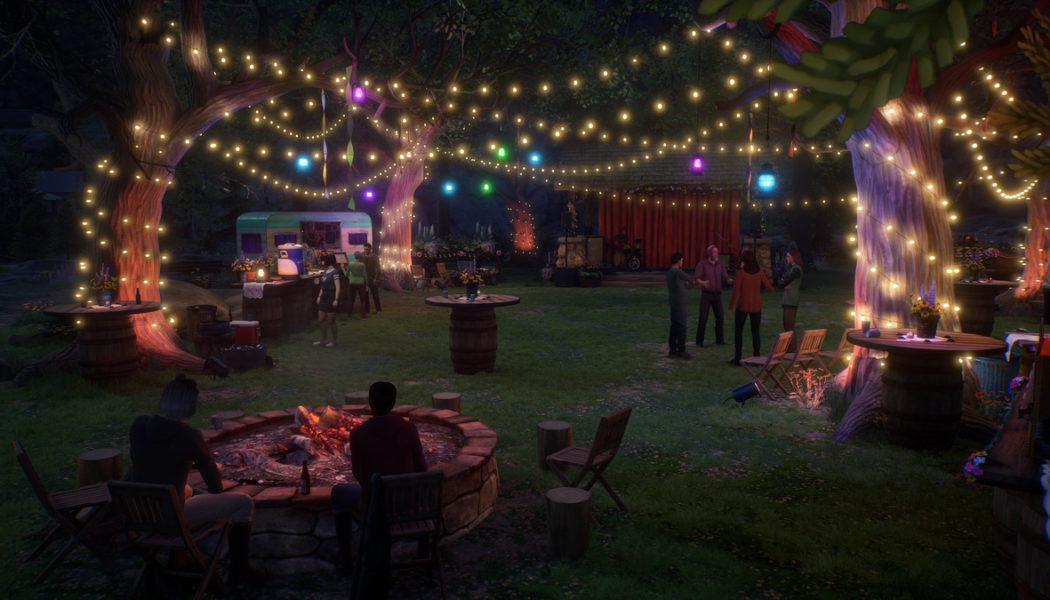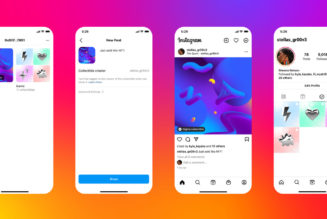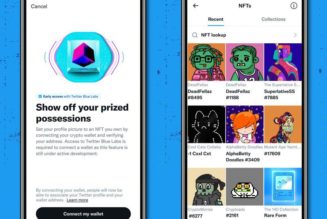At this point, the Life is Strange formula is well established. Each game follows a young adult going through some kind of personal trauma, while also learning to deal with a newfound superpower, whether it’s time travel or telekinesis. So far it has worked in a few different flavors: the original felt a bit like an interactive Veronica Mars, while its sequel built on that with a bold and overtly political story. True Colors is the latest entry in the growing anthology, and it once again features a troubled kid with special abilities who’s struggling to keep it together. It also makes a big change by ditching the episodic format and releasing the complete story all at once
Aside from that, it doesn’t mess with the formula much, nor does it make the daring narrative leaps of LiS2. Instead, it feels like a refinement. It takes the best parts of Life is Strange — choice-driven gameplay, characters you’ll fall in love with, a vibe that’s like an interactive indie rock album — and applies them to a new dark mystery that’s hard to put down. And that’s a whole lot easier now that you can binge the whole thing.
True Colors centers on Alex Chen, a 21-year-old who has spent nearly a decade bouncing around the foster care system. At the outset of the game that’s about to change: she’s getting ready to move in with her estranged brother in an idyllic small town in Colorado. It’s an eccentric and charming place with a kick-ass record store, a pub run by a man full of fatherly wisdom, a dispensary with an art studio in the back, and stunning mountain views no matter which direction you look. After so long without a real home, it’s maybe the perfect place for Alex to settle down for a bit. She easily falls back into a familial routine with her brother — one of the first things they do is rock out in an embarrassing air guitar session — and quickly befriends seemingly everyone in town.
:no_upscale()/cdn.vox-cdn.com/uploads/chorus_asset/file/22834047/lis_tc_launch_longlist_044.png)
Of course, this is Life is Strange, so things don’t stay so peaceful for long. I won’t spoil the specifics, but there’s a significant death fairly early on (I can say from experience that even if you know it’s coming, it still hits really hard) that leads Alex down a rabbit hole of figuring out how it actually happened. At its core, True Colors is a classic small town murder mystery, the kind where everyone seems like they could be a suspect once you dig in a little. Eventually, you’ll learn that there’s a sinister history to the place, including a powerful corporation with a strong hold on the town.
What makes it feel distinctly like Life is Strange comes down to a combination of gameplay and tone. If you’ve never played any of these games before, they’re essentially interactive dramas, where you spend as much time watching events unfold as participating. Your interactions mostly come in two forms: making decisions and investigating. Often the game will present you with a binary choice that influences how the story plays out, or how other characters respond to Alex. That could mean intervening in a domestic squabble or choosing with whom to flirt. (True Colors presents two very appealing romantic options that can be hard to choose between.)
The twist here is Alex’s power, which allows her to see someone’s “aura.” Essentially, she can tell how someone is feeling by looking at them — they’ll glow different colors depending on mood — and then use that to delve further into their psyche. This can play out in a few different ways. Sometimes, she’s able to change someone’s emotional state by learning about them and saying or doing the right thing; other times she can use that information to help people in more practical ways. In one scene, Alex helps an amnesiac remember what they were doing. In another, she is able to talk a scared young boy into following her to safety. Her power feels perfectly in tune with the game. Life is Strange has always been a series about listening to and helping people; here it just becomes an overt gameplay mechanic.
True Colors also does an incredible job when it comes to pacing and tone. There are times when the action is so fast, and you have to make a hard decision in a split second, that my heart was truly racing. In other moments you can just lounge around on a dock thinking about life. The game lets you linger when needed, both with moments and characters, so you can fully understand them. Things also get incredibly dark, particularly in the later chapters, when Alex is forced to confront the innermost conflicts of both her friends and herself.
:no_upscale()/cdn.vox-cdn.com/uploads/chorus_asset/file/22832633/05_Steph_Sadness_Power_1080.jpg)
It balances this out with lots of chill, even playful moments; one chapter takes place almost entirely inside a goofy LARP, and one of the most important decisions you’ll make in the game involves helping Alex figure out just what she wants to do with her life. The game jumps between horror and heartbreak, dad jokes and drama, with an ease that’s rare to see in games. True Colors is the kind of game where you’ll be as worried about whether your crush likes you as you are about solving the grisly crime at the center of the story.
The biggest change in True Colors comes not from how the game plays, but how it’s being released. Historically, the series has been episodic: each new entry is divided into chapters, which are then released periodically every month or so. It’s a great idea, but the realities of game development often meant there were huge gaps between episodes, making it hard for the story to maintain momentum. In True Colors, this is no longer the case: all five chapters are being released at once, and the story benefits from this kind of close connection, where you can see the ramifications of your choices without struggling to remember what happened last time.
The anthology format has helped keep Life is Strange fresh across three main entries, but it also comes with a significant risk. This is a series where so much relies on your investment in the characters; these stories work because you want to help characters like Max Caulfield and Sean Diaz live a better life. Luckily, despite a new setting and lead, True Colors has exactly that. I played through the entire thing in two sittings — not because I had to see how it ended, but because I needed to make sure that Alex was alright.
Life is Strange: True Colors launches September 10th on the PC, PS4, PS5, Stadia, Switch, Xbox One, and Xbox Series X.









